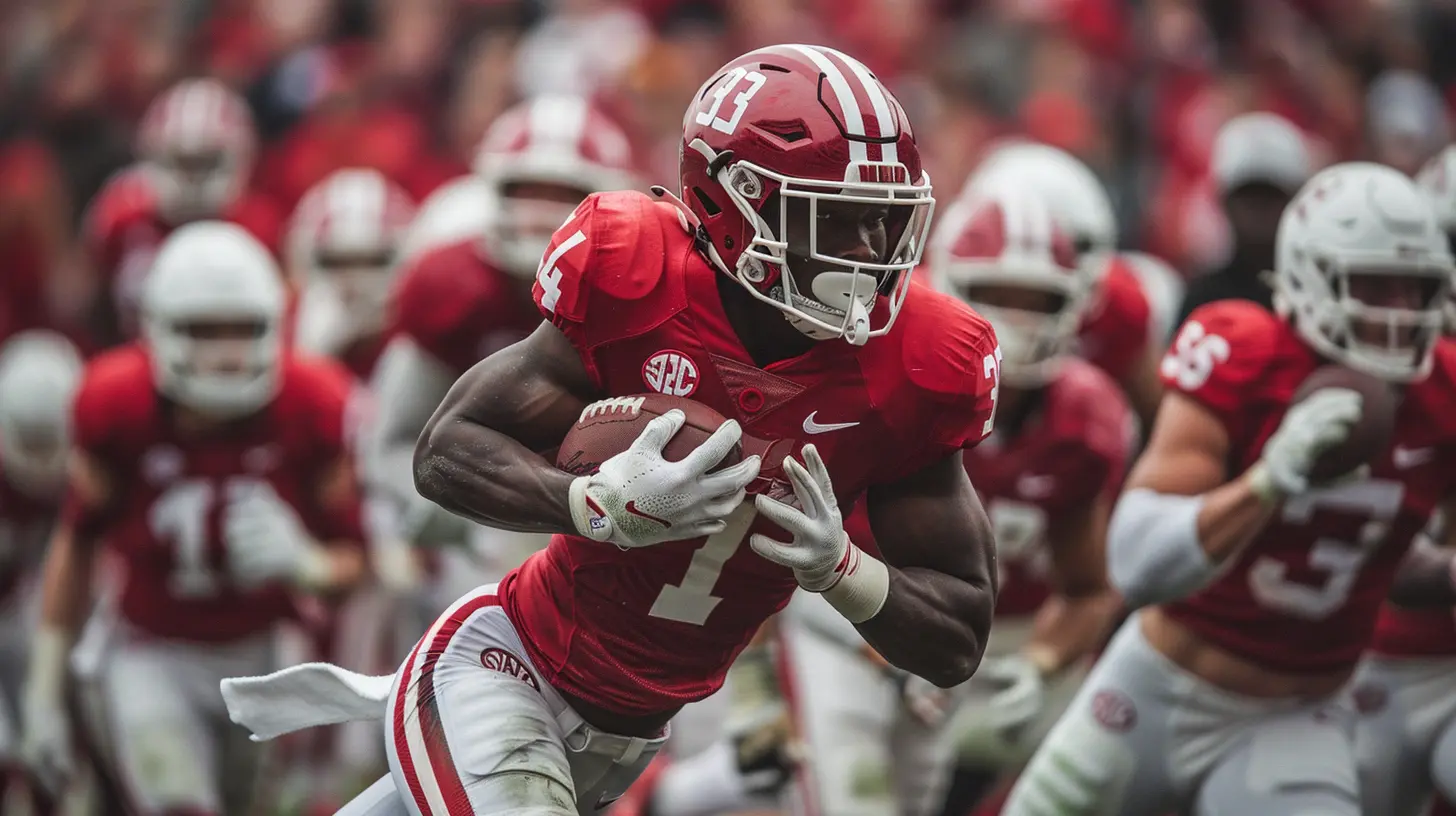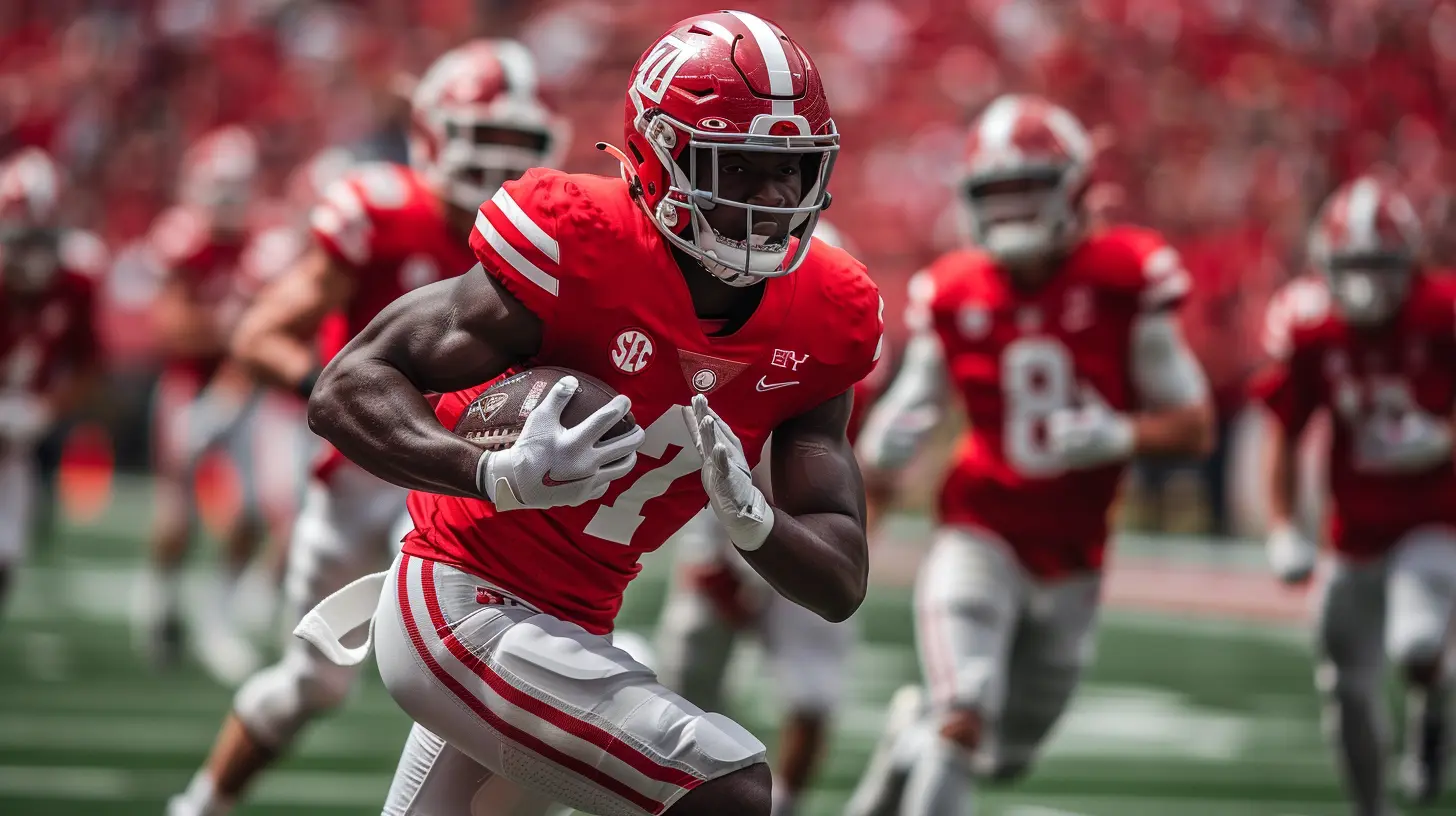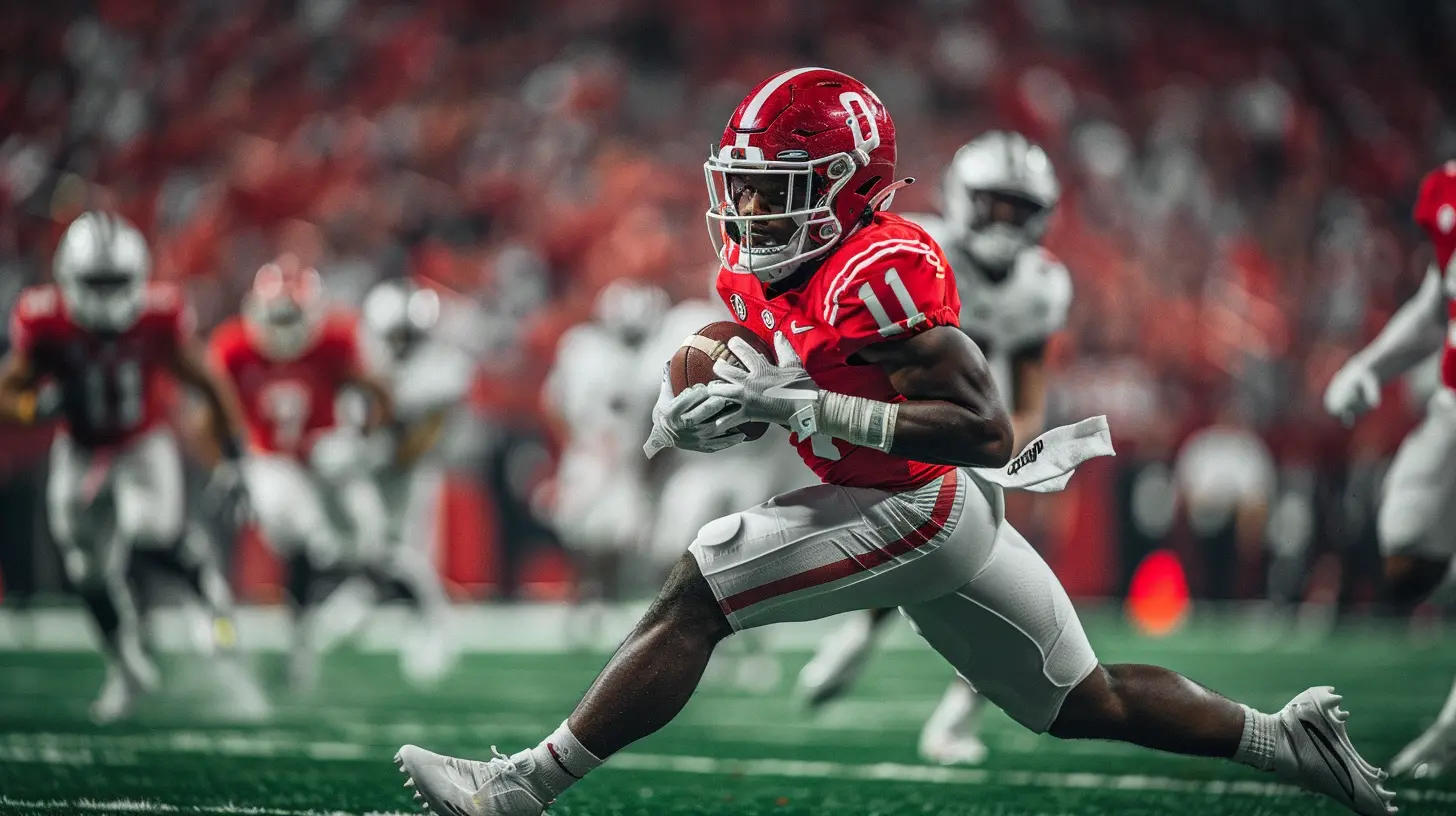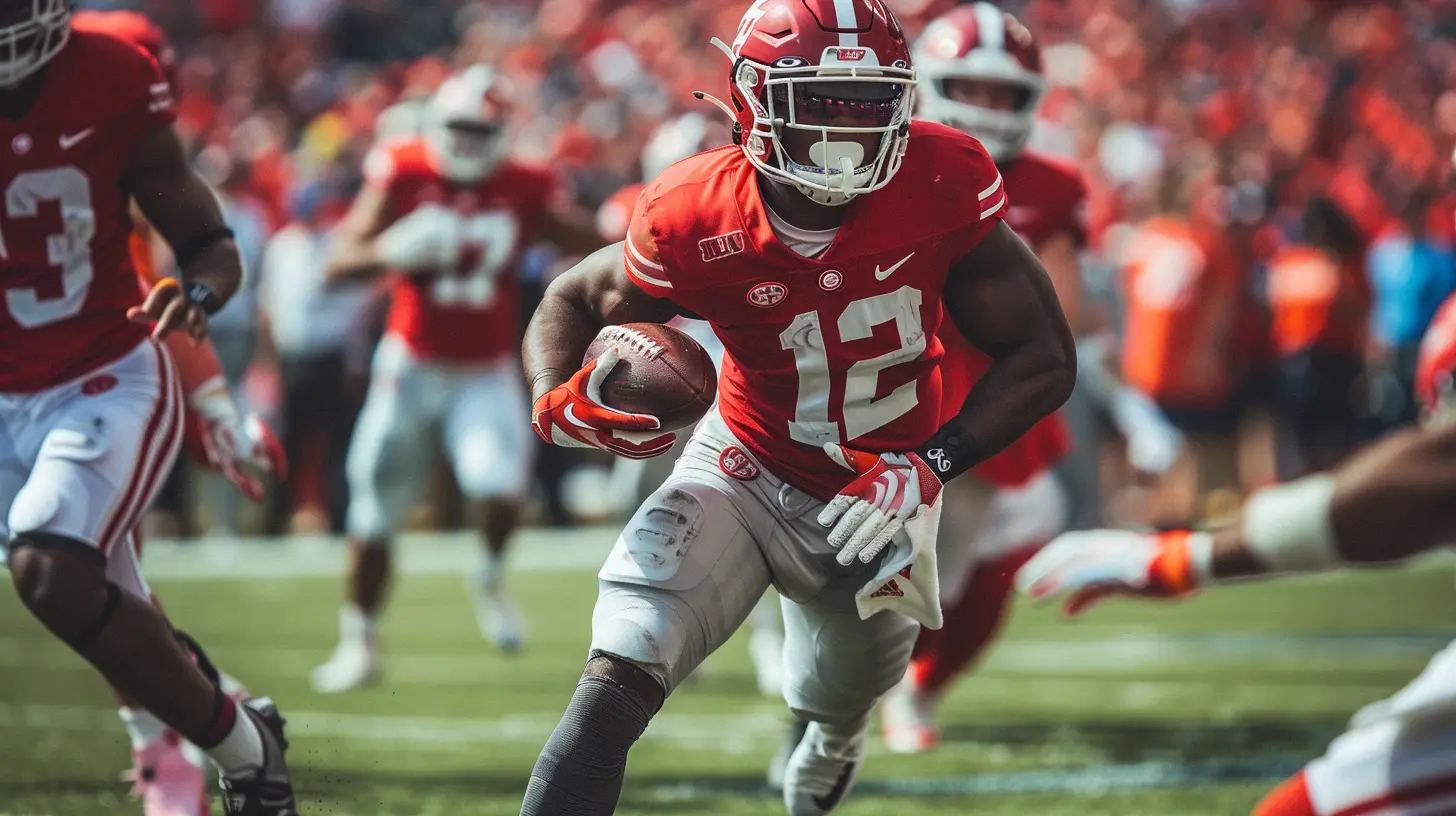How Performance Metrics Are Shaping College Football Recruiting
21 August 2025
College football recruiting has always been a high-stakes game. Coaches, recruiters, and analysts spend countless hours evaluating players, poring over game film, and attending high school matchups to find the next big star. But in today’s era of analytics, old-school scouting methods alone don’t cut it anymore.
Now, performance metrics are stepping into the spotlight, revolutionizing how college programs identify and recruit talent. From speed and agility tests to advanced data analytics, these numbers are shaping the future of recruiting like never before. But what does this mean for athletes, coaches, and fans? Let’s break it down. 
The Evolution of College Football Recruiting
Back in the day, recruiting was all about the "eyeball test." Coaches would show up to games, watch players in action, and make gut-feeling decisions based on their physical presence and on-field performance. If a player looked fast and strong, they had a shot at getting recruited.But times have changed. Today, everything is measured. There’s no hiding behind just looking the part—if the numbers don’t back it up, recruiters will know.
From Gut Feeling to Data-Driven Decisions
Recruiting has gone from being an art to a science. While a coach’s experience and instincts still matter, those instincts are now supplemented (or sometimes overridden) by hard data. Every sprint, jump, throw, and even a player's reaction time can be tracked, measured, and compared.Think of it like fantasy football scouting—except real lives and careers are on the line. 
The Role of Performance Metrics in Recruiting
So, what kind of data are recruiters looking at? Let's break down some of the key performance metrics that are influencing college football recruiting.1. Speed & Agility Tests
Speed kills in football. Whether you're a running back breaking through the line or a cornerback trying to shut down a receiver, speed is non-negotiable. That’s why metrics like:- 40-yard dash times
- Shuttle drills
- Three-cone drills
…are closely analyzed. In a game where inches and milliseconds can make a difference, a recruit’s ability to accelerate and change direction quickly is a major factor in scholarship decisions.
2. Strength & Power Measurements
Football is a physical game, and raw strength matters. Scouts look at:- Bench press reps (225 lbs for linemen and upper-body strength positions)
- Squat and deadlift maxes
- Explosive power tests, like the vertical jump
A player who can generate explosive power off the line of scrimmage or shed tackles with ease has a better shot at catching a coach’s attention.
3. Endurance & Conditioning
Football isn’t just about short bursts of action—players need stamina. Coaches assess endurance through tests like:- Yo-Yo Intermittent Recovery Test (similar to the beep test)
- VO2 max tests (measuring oxygen efficiency)
These numbers tell programs how well an athlete will hold up during long drives, late-game situations, and high-tempo offenses.
4. Game Performance Analytics
Beyond raw physical ability, recruiters are digging deeper into how players perform in real-game scenarios. Advanced analytics help evaluate:- Yards after contact for running backs
- Completion percentages under pressure for quarterbacks
- Tackles per game and missed tackle rates for defenders
With AI-powered tools and tracking software, recruiters can analyze every play and make informed decisions based on real-game effectiveness. 
Why Performance Metrics Are Changing the Game
More Transparency for Recruits
Gone are the days when only the biggest high school programs got attention. Now, if you have the numbers to back up your skills—whether you play in Texas or a small town in Wisconsin—you can be noticed.Platforms like Hudl, Rivals, and 247Sports allow players to showcase their stats, connecting them with college programs that might not have seen them otherwise.
Less Room for Bias
Recruiting used to favor players from powerhouse schools with strong reputations. But performance metrics level the playing field. If a lesser-known player has elite speed, power, and production, the numbers speak for themselves.Better Player Development
When recruits know exactly what metrics coaches are looking at, they can train smarter. Instead of just focusing on lifting heavier weights or running faster times, they can see where they need improvement and tailor their workouts accordingly.
The Impact on College Football Programs
Performance analytics doesn’t just help the players—it gives coaches an edge, too.Building the Perfect Roster
With access to deeper data, coaches can recruit players who fit their specific system, rather than just taking the best available athlete. Want a dual-threat quarterback who excels under pressure? The numbers are there. Need a defensive back with elite closing speed? There’s a stat for that too.Reducing Recruiting Mistakes
Misses in recruiting can be costly. A 5-star recruit who doesn’t perform as expected can set a program back years. With performance metrics, programs can reduce the risk of bringing in athletes who don’t fit the system or can’t handle the physical demands of college football.Maximizing Potential
Once a player is on campus, those same performance metrics are used to track progress, identify weaknesses, and create customized development plans to get the most out of each recruit.Will Traditional Scouting Methods Disappear?
Not entirely. While performance metrics are becoming more valuable, they can’t measure everything. Intangibles like leadership, football IQ, and work ethic still play a huge role in whether a player succeeds at the next level.Think about it: Tom Brady didn't have jaw-dropping athletic metrics coming out of college, yet he became one of the greatest quarterbacks of all time. Some things just can’t be measured in numbers.
The Future of Recruiting: A Data-Driven Era
We’re moving toward a future where data will play an even bigger role in recruiting. With emerging technology like:- GPS tracking for in-game speed and workload monitoring
- Biomechanics analysis for injury prevention
- AI-powered scouting reports
…recruiting could become even more precise.
For athletes, that means training smarter, not just harder. For coaches, it means making fewer mistakes in the recruiting process. And for fans? It means we might see even more elite talent rise to the top, making college football more competitive than ever.
Final Thoughts
Performance metrics have forever changed the way college football recruiting operates. While raw talent still matters, the numbers behind an athlete’s performance now play a crucial role in determining their future.For high school players dreaming of playing at the next level, the message is clear: put in the work, track your progress, and let the numbers do the talking. Because in today’s game, talent isn’t just seen—it’s measured.
all images in this post were generated using AI tools
Category:
Sports StatisticsAuthor:

Fernando Franklin
Discussion
rate this article
1 comments
Flora Lambert
This article insightfully highlights the transformative impact of performance metrics on college football recruiting. By quantifying athletic potential and skill sets, metrics not only enhance the scouting process but also level the playing field for overlooked talent. However, reliance on data must balance with traditional evaluation to ensure a holistic approach to recruitment.
September 6, 2025 at 12:56 PM

Fernando Franklin
Thank you for your thoughtful comment! I completely agree that while performance metrics are revolutionizing recruiting, it's essential to maintain a balance with traditional evaluation methods for a comprehensive approach.


